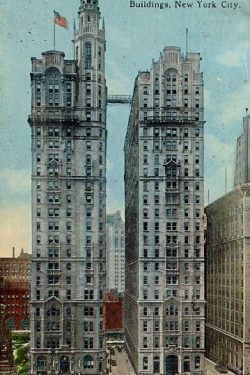As part of its mission to document the historical evolution of the tall building in New York City, The Skyscraper Museum is organizing a symposium on the work of architect Francis Hatch Kimball (1845-1919). A prolific but little-studied figure in the early high rise history of New York City, Kimball was responsible for a series of significant commercial towers, from the 9-story 1889 Corbin Building and the 1894 Manhattan Life Insurance Building (once the city’s tallest), to the massive, 30+ stories of the 1908 City Investing Company and 1914 Adams Express Company Building. Between those, he designed a range of ornate office towers such as the Empire Building, 111 and 115 Broadway (the Trinity and U.S. Realty Company buildings), and 37 Wall Street, in which he explored various styles from neo-Gothic and Renaissance to Beaux-Arts. Kimball’s historicist approach helped to define a distinctive “New York School”; during the same years that Chicago architects such as Jenney, Sullivan, Root, and Burnham established what has been called the First Chicago School of commercial architecture
The full-afternoon symposium will closely examine Kimball’s early skyscrapers and commercial architecture from the perspectives of design, technology, urban and material culture, and New York City history. There is no monograph, historical or contemporary, on Kimball’s tall buildings or his architectural practice, despite his important influence on the turn-of-the-century streetscape of lower Manhattan, the invention of the white-collar workplace, and the iconic identity of the early modern metropolis.
